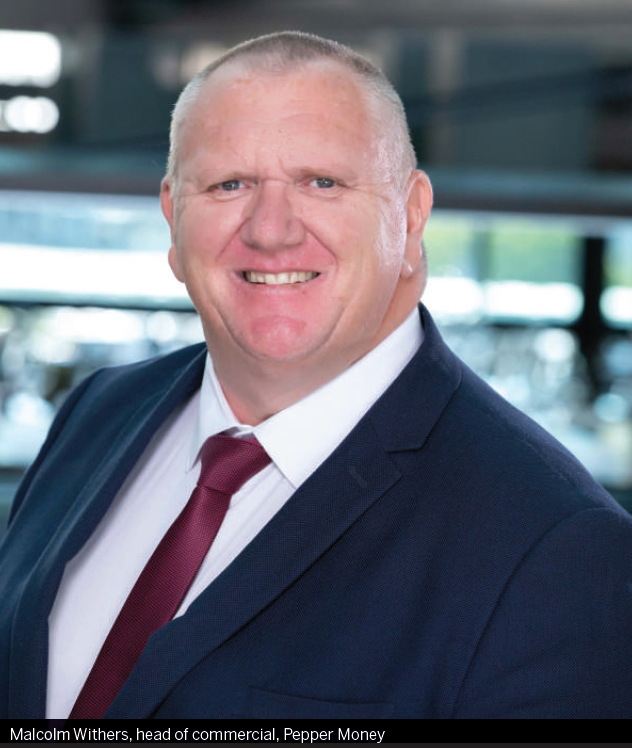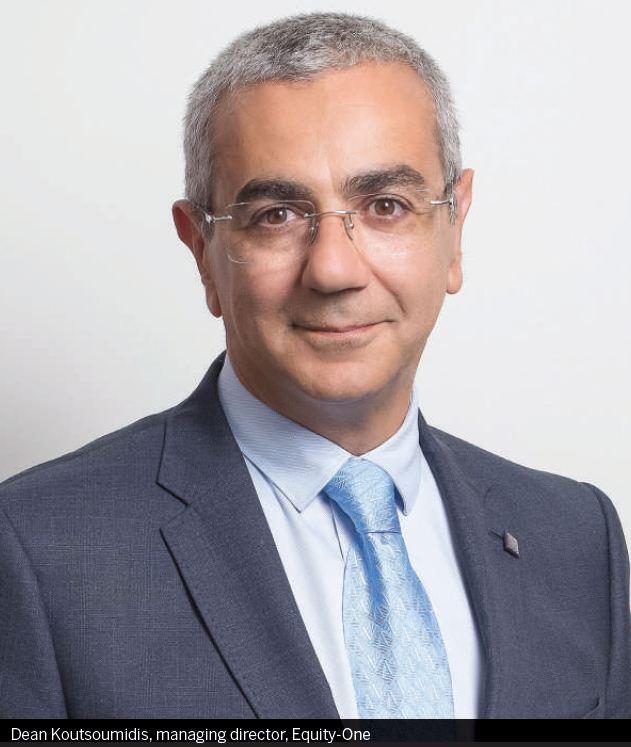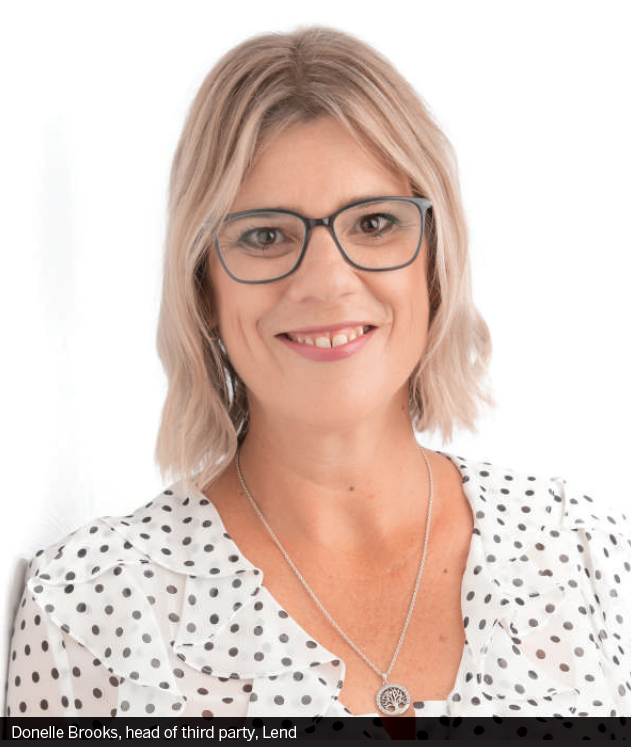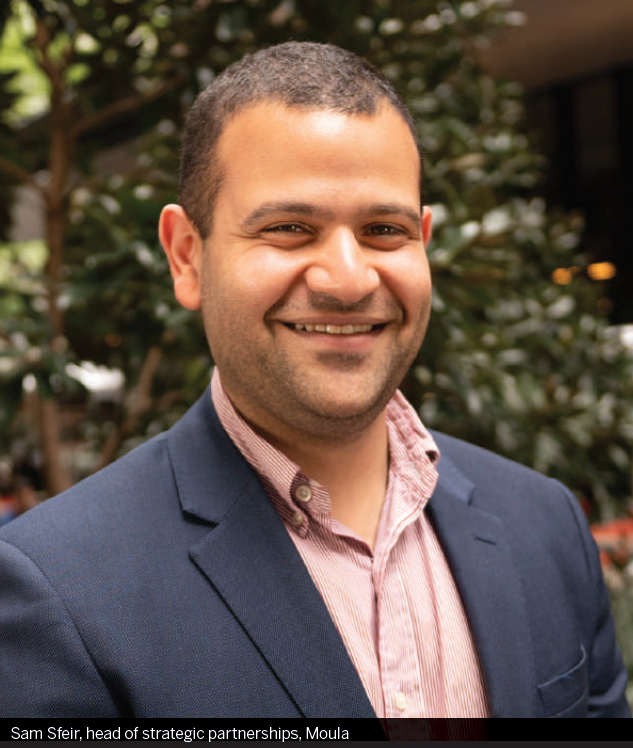

Brokers are being encouraged to expand into commercial loans, with non-bank lenders offering flexible products designed for SMEs. Benefits for brokers include higher commissions, stronger client relationships and diversified income.
Commercial funding for small to medium enterprises remains an underserviced sector, with businesses increasingly looking outside the major banks to non-banks for access to finance.
Non-bank lenders Liberty, Pepper Money, Thinktank, Equity-One, Moula, Semper and Lend have the specialist expertise to help brokers and their SME clients.
They are also urging brokers not operating in this space to diversify, boost their income streams and client relationships and take advantage of an expanding market.
While SMEs in some areas are struggling due to pandemic lockdowns, others have been able to pivot to an online model and capitalise on government stimulus and support, and some are seeking funding for warehouse space.
John Mohnacheff, group sales manager at Liberty, says thenon-bank has been a leader in the third party commercial lending space for more than 15 years.
“Our continued product innovation ensures brokers can help a broader range of customers, including the underserved SMEs. As customer demand grows, Liberty will continue to refine our product suite to ensure we support both brokers and customers’ changing needs,” says Mohnacheff.
He says Liberty has a comprehensive range of commercial loan products, demonstrating its commitment to helping more kinds of business customers.
“As a specialist lender, our solutions are highly flexible and can be tailored to suit an extensive range of commercial lending needs. We have prime, non-prime, SMSF and low-doc options on offer for business customers, as well as secured and unsecured loan options.
“Our suite of lending products also includes competitive commercial loans which can help customers to invest in commercial property.”
Pepper Money head of commercial Malcolm Withers says Pepper launched its commercial property loan product in 2019 following strong demand from “our broker partners to bring the customer-centric approach we are known for to the commercial property space”.
 “It forms an integral part of our offering to brokers and customers today,” says Withers.
“It forms an integral part of our offering to brokers and customers today,” says Withers.
He says Pepper Money’s commercial offering was built with customers’ needs in mind.
“Our prime and near prime commercial property loans include full-doc and alt-doc options for customers who need commercial lending solutions up to $3m in loan size. Whether they want to buy an investment property or commercial property to operate their business out of, or access equity and cash flow to support them in growing their business, we have solutions to help them achieve their goals.”
Withers says Pepper Money can provide customers with more access to equity through higher LVRs as well as cash flow flexibility and longer loan terms, a 100% offset sub-account, free redraw, and online banking tools.
Its Near Prime product supports customers who have gone through a life event but have come out the other side and are looking for a new loan. Withers says Pepper Money is one of the few lenders with this offering.
“Everyone’s situation is unique, and we work to understand each individual customer’s story when assessing an application.”
Thinktank general manager partnerships and distribution Peter Vala says the company was formed in 2006 with the goal of simplifying commercial property lending for brokers and customers by providing flexible solutions to improve a borrower’s business and personal cash flow.
“Although commercial lending still represents the majority of business we write, we are becoming more balanced across a range of products and security types,” he says.
“This can be associated with progressive product diversification and extension into the residential owner-occupied and investment market, in addition to our presence in residential and commercial SMSF.”
Thinktank offers a full range of loan alternatives, including full-doc, mid-doc (alternative income verification), quick-doc, commercial SMSF, residential and residential SMSF.
“All of our products are straightforward set-and forget facilities with no annual reviews, no regular revaluation requirements and no ongoing fees.
 “Our extended 30-year loan term is a good example of the flexibility we can offer, which can greatly assist a borrower’s monthly cash flow. We also have an in-depth understanding of SMSF LRBA lending that supports a range of borrowing structures not available through other lenders,” Vala says.
“Our extended 30-year loan term is a good example of the flexibility we can offer, which can greatly assist a borrower’s monthly cash flow. We also have an in-depth understanding of SMSF LRBA lending that supports a range of borrowing structures not available through other lenders,” Vala says.
Andrew Way is director of established non-bank provider Semper, which he describes as a “pure-play” commercial lender.
“Since 2001, the company has provided bespoke solutions to address funding challenges or support growth,” says Way.
“Semper has a reputation for facilitating opportunity and enabling business growth through the provision of highly competitive rates that are weighted fairly against risk, backed by a robust warehouse funding facility.”
Way says Semper is renowned for structuring complex $2m-plus commercial deals that often require a blended product or collaborative approach – for example, a mix of first and second mortgages or additional third-party participation, such as equipment or factoring finance, with business adviser/accountant input.
Semper’s points of difference include providing structured debt solutions for complex commercial transactions worth $2m and over, with the average calendar year transaction size in 2021 being $8m; competitive rates from 5.99% per annum; and collaboration with other specialist lenders’ complementary products (ie invoice finance) in conjunction with a business client’s accountant and/or lawyer.
The lender also has a robust warehouse funding facility and loans written exclusively through professional services.
 Equity-One managing director Dean Koutsoumidis says commercial lending is in the company’s DNA.
Equity-One managing director Dean Koutsoumidis says commercial lending is in the company’s DNA.
“Our focus is to provide a relevancy to borrowers who are not accommodated by the majors. It is all we do, quite frankly,” he says.
“Since we began operations over 20 years ago, our offerings have remained relatively unchanged; that is, interest-only loans for terms of one to five years.
“Our customers’ needs have not changed in all that time as the majors, unfortunately, cannot cater for everyone. That’s where we come in. Whilst we offer the security of fixed rates, we also do not have any break costs or early termination costs, so it provides borrowers with a short-term commercial solution whilst they are getting all their ducks in a row.”
Sam Sfeir, head of strategic partnerships at Moula, says SMEs are the engine room of the nation’s economy.
“We’re entirely focused on backing good business, and commercial lending is still at the heart of our business,” he says. “We launched with unsecured business loans back in 2013, which remain core to our total offering to this day, alongside our business payments product and new products in development.”
Moula offers unsecured business loans for $5,000 to $250,000, with 12- to 24-month terms and no early repayment penalty.
Sfeir says Moula wants to deal with outcome-oriented businesses that know what they want and where they’re going.
“We’re focused on delivering credit decisions as fast as possible, at the speed of business, which generally means same-day, and often within two hours for loan applications under $50,000.
“Commonly, businesses come to us for funding to help seize opportunities. Perhaps they have an opportunity to buy stock or supplies at a discounted rate, or have landed a new contract and need capital to put on more staff. Businesses love that we give them the ability to repay funds early, at any stage, without any fees or penalties.”
Lend head of third party Donelle Brooks says Lend is solely focused on the commercial lending sector, providing brokers real-time access to a comprehensive portfolio of business funding solutions via its custom-built platform, which acts as an alternative commercial finance hub.
“The most aligned products are delivered seamlessly through Lend’s predictive modelling software, which assesses a business’s future performance as the key metric for accessing credit,” says Brooks. “As such, Lend ‘removes the gap’ between borrowers and lenders, and supports brokers universally, independently of their commercial finance maturity and financial literacy levels.
“Lend enables brokers to access a centralised stable of commercial finance solutions and receive aligned funding solutions in real time. This includes a full portfolio of unsecured business loans, secured business loans, asset finance, line of credit, supply chain finance, debtor/invoice finance and private lending.”
Brooks says Lend’s main point of difference is its use of technology to provide greater access to business funding. Its custom-built predictive software determines the borrower’s serviceability and capability to pay the loan.
“This enables a clear view of the business’s potential – ‘what this business looks like today’ versus an incumbent model of only measuring previous performance – ‘what this business looked like yesterday’.”
Commercial lending offers brokers an additional avenue for income, enhanced client retention, and greater network expansion, says Vala.
“It also opens up new opportunities through meeting broader customer needs and developing deeper relationships with them and their advisers. Financially, potential income is higher in terms of upfront and trail commission outcomes when compared to residential, while the duration of commercial and SMSF loans tends to be much longer than residential, so the loan and the client stay on the books for longer.”
Vala says access to alternative loans can improve cash flow for brokers’ clients and remove unwanted and onerous covenant reporting requirements and risks associated with annual reviews or shorter-duration loans.
“Many commercial borrowers have been caught out over the years when their loan of one to five years came up to maturity and conditions at the time made it difficult to extend, refinance or even sell. Access to products without regular revaluations or intervention by the lender provides peace of mind and greater confidence, particularly when property markets and business conditions fluctuate.”
 Mohnacheff says as a largely underserviced industry, commercial lending offers ample opportunity and a great way for brokers to broaden their customer base.
Mohnacheff says as a largely underserviced industry, commercial lending offers ample opportunity and a great way for brokers to broaden their customer base.
“We know that customers seek convenience, and being able to offer a broad suite of services is likely to be a key drawcard to get new customers in the door, ” he says.
“Diversifying into this space can help brokers not only attract new customers but also service existing customers who may require commercial lending support. Commercial borrowers need guidance now more than ever before, and brokers can take advantage of this untapped potential.”
Withers says diversifying ultimately gives mortgage brokers more opportunities to help their customers succeed, allowing them to build stronger relationships with customers and become their go-to person, not just for their home loans but also for business solutions.
“There are three main advantages for brokers who offer Pepper Money commercial products to their customers – quick and in-depth assessment of applications, seamless settlement, and an easy commercial lending process.”
Withers says Pepper Money can provide a credit decision for commercial property applications within three days and complete a seamless settlement process in as little as four weeks, giving businesses “the cash they need, when they need it”.
“Pepper Money’s loan process is easy for brokers to understand and use. Brokers can submit commercial applications online into the credit queue and can speak directly to the team handling the application.”
Koutsoumidis says like many professions, mortgage broking has become more specialised than ever.
“This also, however, provides a wonderful opportunity to focus on your relationships,” he says. “The key, we believe, is to be able to offer your clients a cache of offerings from the best lenders in their field. This should include commercial lending and, naturally, Equity-One.”
Way says diversifying into commercial is essential to “evolve a broker’s business” by increasing revenue streams and creating “stickier” client relationships.
“We strongly encourage brokers to move beyond a basic ‘tick and flick’ environment and invest in both enhancing their financial literacy as well as becoming familiar with the different types of commercial lending available and associated lenders/lending criteria,” he says.
 Commercial lending is the way forward, says Brooks.
Commercial lending is the way forward, says Brooks.
“The upside of diversification is tremendous and is undisputed in its capacity to future-proof a broker’s business via generating different, and greater, revenue streams, plus creating deeper relationships.”
Brooks says the broking community is motivated to diversify into commercial lending, but there are barriers to entry that Lend can resolve, and it can help “increase brokers’ confidence and ability to diversify”.
“The founding premise of Lend’s platform is to do the ‘heavy lifting’ through its sophisticated product-lender matching technology. This supports brokers universally.”
At Moula, Sfeir says commercial lending, particularly unsecured finance, opens up many opportunities for brokers and their clients.
“With the housing market experiencing another upturn, many mortgage brokers have turned their focus inward to their core product. However, that means missing out on the business bounce-back, as well as missing the fact that, as we neared the new financial year, business confidence kept hitting seven-year highs.”
Withers says Pepper Money is a long-term advocate for the education of brokers, and actively supports brokers and aggregator partners with regular training.
“Our current training program aims to develop brokers’ confidence by giving them the tools they need to identify an opportunity and have a quality customer conversation. Alongside this we provide technical training around our products and policies, assessing customers’ income and servicing.”
Withers says diversification is about providing more solutions to the customer, and it’s easier to get started than brokers think.
“For example, the next time they help a self-employed customer with a home loan application, by fully understanding their customer’s goals, growth plans, where they want to be in five years’ time, brokers can help them navigate the path to achieve growth through additional solutions like commercial property loans,” he says.
Mohnacheff says Liberty is committed to its broker network and strives to provide the guidance brokers need, when they need it.
“Liberty provides tailored training and development sessions with one-on-one support as required,” publications such as Australian Broker, all of Equity-One’s work is referred by word of mouth.
“We believe this is the best form of business,” he says. “We are very fortunate to have developed a large network of brokers all across the country and focus on our communication with them. This, in a sense, has not changed since we started operations.”
 Way says Semper actively communicates with the broker industry via sophisticated campaigns, including advertising, sponsorships, events, publicity, social media and, importantly, industry collaborations.
Way says Semper actively communicates with the broker industry via sophisticated campaigns, including advertising, sponsorships, events, publicity, social media and, importantly, industry collaborations.
“These campaigns are curated to support brokers overcome barriers to entry to commercial finance and support diversification,” he says.
Semper’s current campaig is focused on the “Future of Commercial Finance”, which unpacks the macroeconomic drivers affecting the commercial lending landscape in a weekly panel commentary.
“We strongly believe that it’s important to keep across the broader macroeconomic and political narrative to stay ahead of the game, as the ‘macro’ moulds the ‘micro’. For the financial services industry, it will dictate the amount and type of finance available to whom. It will open up and close opportunities. And, most importantly, it will shape consumer sentiment, which is arguably the most profound driver.”
The panel includes Way and Nick Samios (Hermes Capital), asset finance specialist Andrew Moulds (Lend), non-bank strategist Alex Brgudac, and commercial broker Nick Harper (Fuzion Capital). To find out more, go to sempercapital.com.au/broker.
Vala says most brokers know about Thinktank due to its association with aggregator partners, PD days, regular newsletters and media coverage.
“Our dedicated relationship manager [RM] model allows a broker to workshop transactions across commercial, residential or SMSF, identifying the best way to assist a customer and structure the finance solution to meet their needs. This is in addition to our regular workshops and product updates we offer all brokers.”
Thinktank regularly assists with marketing activities and contributes to the education of referral partners, such as accountants and financial planners, helping to create and convert opportunities in the commercial lending arena.
“This can be highly appealing as Thinktank operates a pure third party distribution model, which eliminates any possibility of channel conflict and sees brokers as business partners and borrowers as clients of the broker.”
Brooks says Lend consistently executes disruptive education initiatives designed to help brokers upskill their commercial finance industry knowledge.
This is achieved through the successful CPD-accredited LendEd webinar education series, which provides on-point content from industry experts, identifying where the corresponding opportunities are, and ‘how to get the conversation started’.
Lend actively communicates with the broking industry via collaborations with aggregators and lenders, supported through social media, publicity, advertising, sponsorship and industry events.
Sfeir says Moula has an experienced national BDM team that is active in the marketplace, attending industry events, hosting broker events, and positioning themselves as the first port of call for brokers.
“Our BDMs come equipped with a suite of educational materials and tools,” he says. “We email weekly Good Business Deals, highlighting key considerations behind recent funding decisions, and produce a Deal Talk video series featuring our BDMs talking through recent scenarios.”
Sfeir says the initiatives were launched during COVID-19 to encourage more brokers to diversify into commercial finance and maintain a connection to the community.
“These materials have become key broker training resources, complementing our Business Loan Calculator, a pricing tool that brokers can use to download a sample repayment schedule.”
Vala says Thinktank’s main area of digital transformation has occurred in the back office, where enhanced capacity for smarter processing
of transactions is supporting the lender’s long-standing reputation for responsiveness.
“However, our RM model still remains the most important feature of how we do business by providing a level of personal and professional interaction that is required in commercial property lending so as to genuinely help structure and produce the right solution for brokers and their customers,” says Vala.
Mohnacheff says Liberty continues to receive positive feedback on its fast response times and free-thinking approach.
“Our loan-tracking facility, Liberty IQ, allows brokers to monitor deals in real time and empowers them to be the customer’s hero,” he says.
“Additionally, brokers have direct phone and email access to the Liberty credit analyst assigned to their application. This enables efficient communication, which is particularly important for brokers assisting customers with unique circumstances.”
Equity-One has adopted a level of digitisation in order to keep its relevancy to anyone it deals with, says Koutsoumidis.
“Whether using an app, electronic signatures, social media or other newisms of the current business world, digitisation doesn’t offer an advantage per se, but rather is a necessity to stay on the same playing field.”
 Sfeir says Moula continues to innovate and speed up loan turnarounds through its credit decisioning engine, HECTOR.
Sfeir says Moula continues to innovate and speed up loan turnarounds through its credit decisioning engine, HECTOR.
“Built in-house, HECTOR has been specifically trained and tailored to understanding Australian SMEs, which helps us make more accurate lending decisions, faster,” he says.
“Our model represents a step change in credit and underwriting, where we not only empower businesses to use their data as an asset, but through artificial intelligence and machine learning we rapidly accelerate access to capital.”
Sfeir says Moula was delivering credit decisions to brokers and their clients in 48 hours, but now, through automation, decisions for most loan applications under $50,000 are provided within two hours.
Brooks says the founding principle of Lend’s platform is to provide aligned commercial funding solutions in real time.
“It’s intuitive, seamless, automated and delivers real-time results via predictive AI modelling,” she says. “Lend continuously applies software enhancements to further refine the loan application process and product-lender match parameters.”
The non-bank sector is renowned for more flexible loan criteria and speed of access to funding, says Way.
He says the best way for brokers to support a quick turnaround is to make sure they’re across the lending criteria prior to presenting a deal, and do thorough due diligence to ensure they give the lender the full story. They must have a very clear understanding of the loan amount required and its purpose, as well as the business’s security and serviceability, and, finally, they must supply the corresponding paperwork in one hit.
Withers says Pepper Money’s offering aims to make commercial property more accessible to brokers through seamless accreditation and application processes.
“Because of this, Pepper Money has not followed the same trend on turnaround times that some other lenders have,” says Withers.
“Like our residential mortgages application process, we have upheld our quick turnaround times and can provide a credit decision for a commercial loan within three days. This can be attributed to our ease of online applications, which allows a broker to lodge directly to credit and speak to credit managers for inflight deals.”
Mohnacheff says Liberty places high importance on fast turnaround times for loan applications and understands how critical it is to the success of broker businesses.
“To maintain our speedy response times across both residential and commercial loans, we continually measure and adjust where needed.
“We also give direct access to our underwriting team so that our business partners can get quick updates. By opening our lines of communication with our business partners, we have been able to significantly improve our turnaround times, which benefits brokers and customers alike.”
Koutsoumidis says loan turnarounds with the majors have become problematic.
“I can say that the turnaround times for Equity-One have not changed,” he says. “We still provide terms/quotes and offers in the same day. Mortgage documents are issued in 24 hours and issued electronically.
“The delays, from what we see, are in valuations. Most of the valuers we deal with are very busy, so turnaround times have been affected. Most brokers understand this, though, and the key is to prepare the application as early as possible.”
Vala says Thinktank’s commercial lending SLA turnarounds have actually improved when compared to previous years.
“This is through continued investment in experienced staff and integrating digital technologies to improve processes and service levels. An intentional side benefit of this is the time returned to a RM to invest in supporting our relationships with brokers and aggregator partners.”
Brooks says Lend is renowned for alleviating the pain point of long turnaround times by providing real-time commercial finance solutions via its superior product-lender matching ability, facilitated through its predictive modelling software.
Customers want faster decisions, on-demand service, and more flexible ways to access capital to grow their businesses, says Sfeir.
“Over the next 12 months, we’ll see more commercial lenders rising to this challenge, enhancing and expanding their offering, and a proliferation of hyper-targeted, point-in-time funding solutions,” he says.
Sfeir says until there is widespread vaccination, Australia will continue to experience labour market dislocations and even then potentially protracted readjustments.
“This is a consequence of closed borders, which make it more challenging for businesses to fill skills shortages. Some groups will be harder hit than others, and as we saw through 2020, much of this is difficult to predict.”
Moula welcomed the news in June that another 22 occupations were added to the Priority Migration Skilled Occupation List amid international border closures.
“This is a positive development for SMEs, who will often access finance to put on new staff, including skilled immigrants,” Sfeir says.
Mohnacheff says government stimulus programs have helped many businesses keep their doors open and responded to the need for more businesses to access capital.
“Liberty has supported many Australian businesses under the SME Guarantee Scheme, and we look forward to … helping more business owners to recover and invest in the future. As more customers become aware of the advantages that specialist commercial loans can offer, we can expect to see their popularity soar.”
While the pandemic continues to challenge the commercial sector, Mohnacheff says the trend is transformation and resilience.
“As more Australians turn to online retail, demand for warehousing
is on the rise. Record-low interest rates have also encouraged investors to enter the commercial property market,” Mohnacheff says.
“And, with economic growth forecast throughout 2021 and beyond, the commercial lending market is anticipated to strengthen over the next 12 months.”
Withers agrees that government stimulus has had a positive effect, with growing demand for new local businesses to serve new housing estates, giving investors and business owners the confidence to leverage local commercial spaces to operate businesses.
“I believe the market will continue to strengthen over the next 12 months as we see more investors turn to commercial property lending, taking advantage of well-priced property values and positive rental yields, while residential market yields may be softening due to the current strong growth in residential property prices.”
Withers says labour shortages have meant businesses have had to get creative with employment.
“We recently financed a large business which has historically relied on fruit pickers – a job traditionally favoured by travelling backpackers.
“With fewer international arrivals, their solution to a shortage of pickers on their farms was to employ the entire town. This has had a huge impact on the local unemployment rate and a wider knock-on effect of driving up local business confidence.”
Vala says all indications point to a commercial property market that is continuing to stabilise if not improve.
“Borrowers have adapted remarkably well to the challenges raised by COVID, as well as dealing with the ongoing uncertainties by putting mitigation plans in place when they are looking to buy a property, including the factoring in of alternative exit strategies,” he says.
“We’ve observed that borrowers have generally positioned themselves very constructively for the removal of government support.”
Despite COVID, demand for industrial property has steadily risen, says Vala, and indications are that this will continue strongly into 2022.
Retail and office space has been affected by work-from-home arrangements and fewer staff frequenting CBDs, impacting some property values, while suburban office and retail have benefited from decentralised working.
“Australians are spending their income at home, the economy is tracking well, and property market conditions are likely to remain positive.”
Way says Semper is not seeing any drip-down benefit in the SME space from tax breaks or QE-funded bank loans. “It would appear much of this funding is going on residential home loans and investment property mortgages,” he says.
Way expects demand for non-bank funding to grow, driven by developers seeking to extract as much equity as possible from dormant assets, and COVID-affected businesses raising debt to fund an attempt to trade out.
“COVID will continue to disrupt world travel through 2022, and supply chains will strain to breaking point, adding an inflationary burden to world markets,” Way says.
“Lenders will have to differentiate between failing businesses for which debt will only add a further burden (zombie businesses) and companies with a viable capacity to trade back to sustainable growth.”
Koutsoumidis says any government stimulus contributes to confidence.
“If there is confidence, then commercial property transactions are directly impacted positively. So, in that sense, there is a correlation, but not one that can be accurately measured per se.”
He expects a steady level of commercial activity in the next year.
“Without a doubt, we need to get the COVID strategy moving along. Be it vaccinations, or some sort of unified approach between all states, we need these matters dealt with, and dealt with fast. We are in the best country, but people are fatigued by the stop-start effects the governments are having on businesses. If we can iron these issues out, then I think it’s full steam ahead for commercial lending.”
Brooks says government incentive schemes have significantly increased the appetite for start-up finance.
“This has been compounded by personal and professional lifestyle adjustments, including the progressive shift to subregional areas from metro locations to support work-from-home models,” she says.
“We expect a significant upsurge to occur in the requirement for commercial finance in general, as well as specific product classes that correlate with increasing demand and acceptance for alternative funding solutions.”
